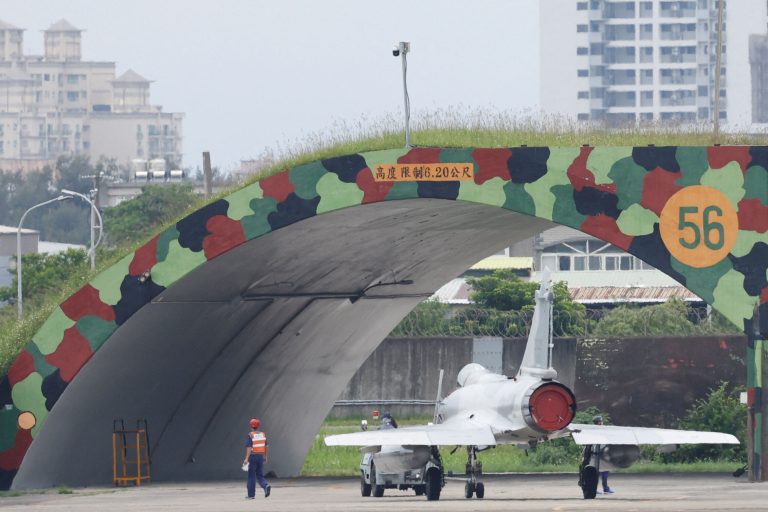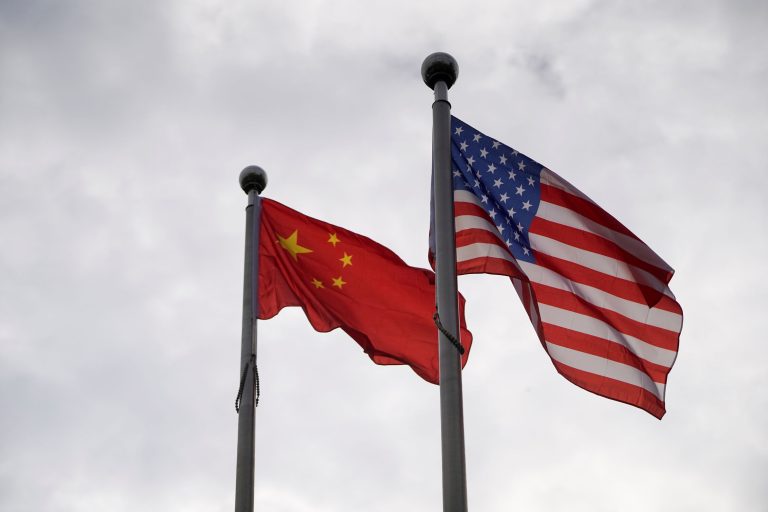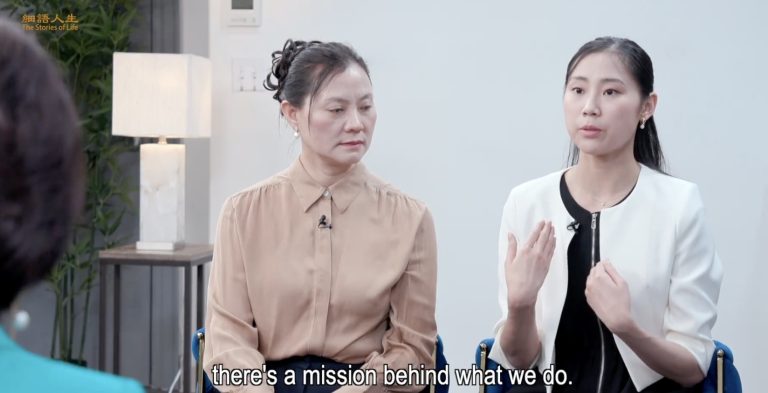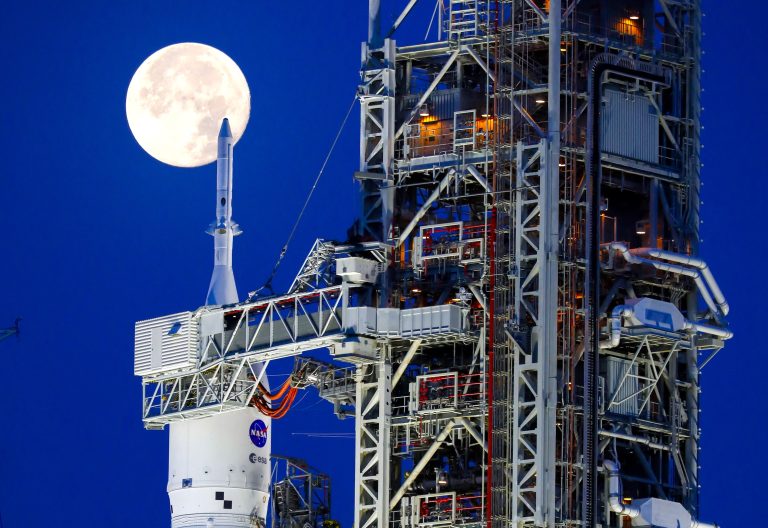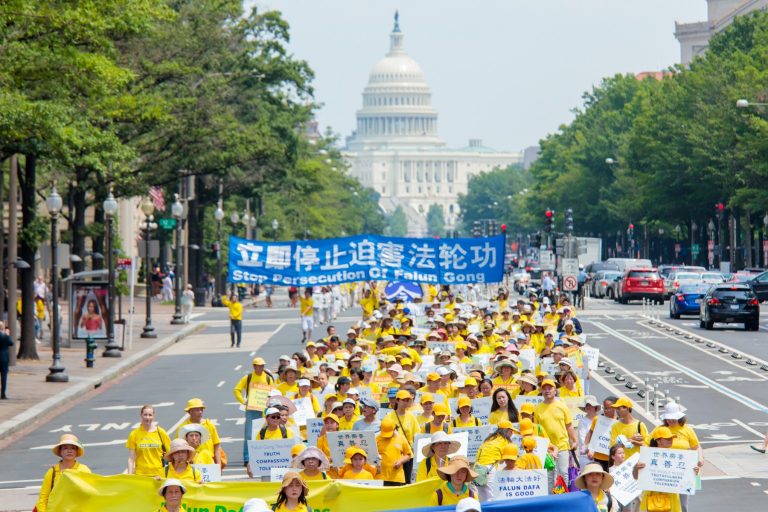On May 23, days after Taiwan inaugurated its new president Lai Ching-te, Communist China began a series of new military drills around the island, characterizing these as a response to “separatist acts.”
The maneuvers included bomber aircraft and simulated attacks in the Taiwan Strait area, around groups of Taiwan-controlled islands beside the Chinese coast.
The Chinese People’s Liberation Army (PLA) said it had started joint military drills, involving the army, navy, air force and rocket force, in areas around Taiwan at 7:45 a.m. (23:45 GMT).
It’s the first time their exercises have included areas north, south and east of Taiwan, as well as areas around the Taiwan-controlled islands of Kinmen, Matsu, Wuqiu and Dongyin.
Taiwan’s defense ministry said 15 Chinese navy ships, 16 coast guard and 33 aircraft were involved in the drill, dubbed “Joint Sword – 2024A”.
Success
You are now signed up for our newsletter
Success
Check your email to complete sign up
Lai, of the Democratic Progressive Party (DPP), won Taiwan’s hotly contested three-way presidential election this Jan. 13.
Because he and his party advocate a separate nation and identity for Taiwan, as opposed to reunification with mainland China, the Chinese Communist Party (CCP) considers Lai a dangerous “separatist.”
The CCP took over mainland China in the late 1940s, forcing the Chinese Nationalist government to relocate to Taiwan by 1949. As a result, Taiwan and its surrounding islands are the last territory of the non-communist Republic of China (ROC) — Taiwan’s official name.
In contrast to the Kuomintang opposition party — which despite waging decades of bitter civil war with the CCP on the mainland has increasingly called for cooperation with Beijing in recent years — Lai Ching-te in his May 20 inauguration speech denounced the PRC and called upon Beijing to end its threats.
- ‘No Concessions on Democracy and Freedom’: Taiwan’s New President Tells Beijing
- Cross-Strait Tensions Rise Ahead of Taiwan’s Presidential Inauguration
- CCP Sends Planes Over Median Line to Taiwan, Practices Landing Drills
He added that the two sides of the strait were “not subordinate to each other.”
The next day, PRC Foreign Minister Wang Yi called Lai “disgraceful.”
PRC state broadcaster CCTV said Lai’s inauguration speech was “extremely harmful” and China’s countermeasures are “legitimate, legal and necessary”.
Lai has repeatedly offered talks with Beijing, but has been rebuffed.
His policy on cross-strait relations has followed that formed by his predecessor, ROC President Tsai Ing-wen. In 2020, Tsai said that Taiwan — as the Republic of China — was already a fully independent sovereign democracy.
The ROC Ministry of National Defense condemned the PLA drills, adding that it was confident it could protect its territory. Taiwanese forces were deployed to areas around the island, with air defenses and land-based missile forces tracking possible hostile targets.
“I have confidence in the military,” Lai said at a military base in Taoyuan, near Taipei. “I also ask all my compatriots to rest assured.”
Meanwhile, CCP-controlled media claimed that Taiwan’s future can only be decided by the over 1 billion people of all China, not just Taiwan’s 23 million.
‘Punishment’ for separatist acts
One senior ROC official told Reuters the drills were part of a scenario Taiwan had already anticipated.
Taiwan officials had said they were keeping watch for mainland Chinese military movements during the last run to the presidency.
The PLA said the drills focus on joint sea-air combat-readiness patrols, precision strikes on key targets, and integrated operations inside and outside the island chain to test the “joint real combat capabilities” of the forces.
“This is also a strong punishment for the separatist acts of Taiwan independence forces and a stern warning against the interference and provocation by external forces,” the command added.
Taiwan officials told Reuters those areas were outside Taiwan’s contiguous zone, which is 24 nautical miles from the main island’s coast. ROC force had not observed any large-scale movements of China’s ground and rocket forces.
Su Tzu-yun, a research fellow at Taiwan’s top military think tank, the Institute for National Defence and Security Research, said that although the drills would only last two days, their scope was large relative to previous exercises, as they included Taiwan’s outlying islands.
This would be a clear move to show China’s ability to control the seas and prevent the involvement of foreign forces, and he added: “The political signals here are greater than the military ones”.
In August 2022, China launched live-fire military exercises around Taiwan immediately after a visit by the U.S. House speaker Nancy Pelosi. That series of exercises, the scale of which was unprecedented, ran for four days, followed by several days of additional drills.
A central bank official said the foreign exchange market was operating as normal, with no abnormal entry or exit of foreign capital.
Reuters contributed to this report.



